American Post Impressionists: Maurice and Charles Prendergast
Among the earliest artists to bring the new ideas and styles of European avant-garde painting to the United States, Maurice Prendergast is recognized as the “First American Modernist.” In the early 1900s, his younger brother Charles Prendergast was regarded as the most accomplished frame-maker in Boston, and his reputation as a leading innovator of his craft has only grown. In 1912, Charles embarked on a second and equally successful career as a painter, supported, like Maurice, by some of the most significant artists and patrons of the 20th century.
The first large-scale presentation in Connecticut devoted to these important, early modern artists, American Post-Impressionists: Maurice and Charles Prendergast features over 100 paintings, sculptures, frames, sketchbooks, photographs, letters, and tools drawn from the permanent collection of the New Britain Museum of American Art and the Prendergast Archive & Study Center at Williams College Museum of Art, Williamstown, Massachusetts. This extensive exhibition explores the unique artistic rapport shared by the brothers and traces the development of their careers as well as their involvement in major movements in 20th-century art, including Post-Impressionism and the Arts and Crafts movement.
American Post-Impressionists originates with Maurice’s early works of the 1890s, executed during his studies in Paris, and follows his return in 1894 to the United States. Represented are paintings produced in his subsequent travels through Italy, France, Massachusetts, and Maine that demonstrate his increasing interest in Post-Impressionist style and his evolution toward a more abstracted depiction of figures and landscape. Maurice’s signature scenes of leisure and the landscape are presented in concert with rare winter scenes, still lifes, and portraits.
Populating the exhibition are Charles Prendergast’s sumptuous hand-carved frames and sculptures as well as his idiosyncratic paintings, which diverged from Maurice’s compositions in their folk art aesthetic. Steeped in the Arts and Crafts culture of Boston, and later, New York’s milieu of Modern artists, Charles produced highly prized frames and carved panel paintings that reflect eclectic sources and were influential in American folk and primitive art circles throughout the early 20th century. Among the later works featured are a selection of vibrant compositions that Charles produced while living in Westport, Connecticut. Distinct from his fantastical compositions of the 1910s, these paintings shift their focus to scenes of leisure and recreation—timeless and yet modern themes beloved to both brothers.
Overview:
- The Prendergast Brothers: An American Success Story
- Maurice Prendergast: Studies in Paris, 1891-94
- Charles Prendergast Frames
- Maurice Prendergast, Return to Boston, 1894
- Sojourn to Italy, 1898
- The Subject of Leisure in the Progressive Era
- Maurice Prendergast: Return to Boston, 1899
- Encounters with Modernism: Maurice in Paris and St. Malo, 1907
- A Watershed Exhibition: The Eight, 1908
- Maurice Prendergast: The First American Modernist
- Charles Prendergast’s Mirror Frames, 1912 and On
- Exploring Maine and the North Shore, ca. 1907-19
- Variations
- Portraits
- Charles Prendergast Panel Paintings, ca. 1912-30s
- The Late Works of Charles Prendergast, 1930s-40s
- Maurice and Charles, Side-by-Side
Sponsors:
This exhibition is made possible by the generosity of the Special Exhibition Fund donors, including John N. Howard, Sylvia Bonney, Anita Arcuni Ferrante and Anthony Ferrante, Brendan and Carol Conry, The Aeroflex Foundation, and Pierre and MaryEllen Guertin. We also gratefully acknowledge the funding of Kelly and Jonathan Jarvis, Susan and John Rathgeber, The West Family, and Carolyn and Elliot Joseph.
Additional support for American Post-Impressionists: Maurice and Charles Prendergast is provided by the Bailey Family Fund for Special Exhibitions, Anita Arcuni Ferrante and Anthony Ferrante, the Kathryn Cox Endowment Fund for Special Exhibitions, Dr. Timothy P. McLaughlin and Dr. Marian Kellner, Sharon and David Jepson, and Nancy and David Zwiener.
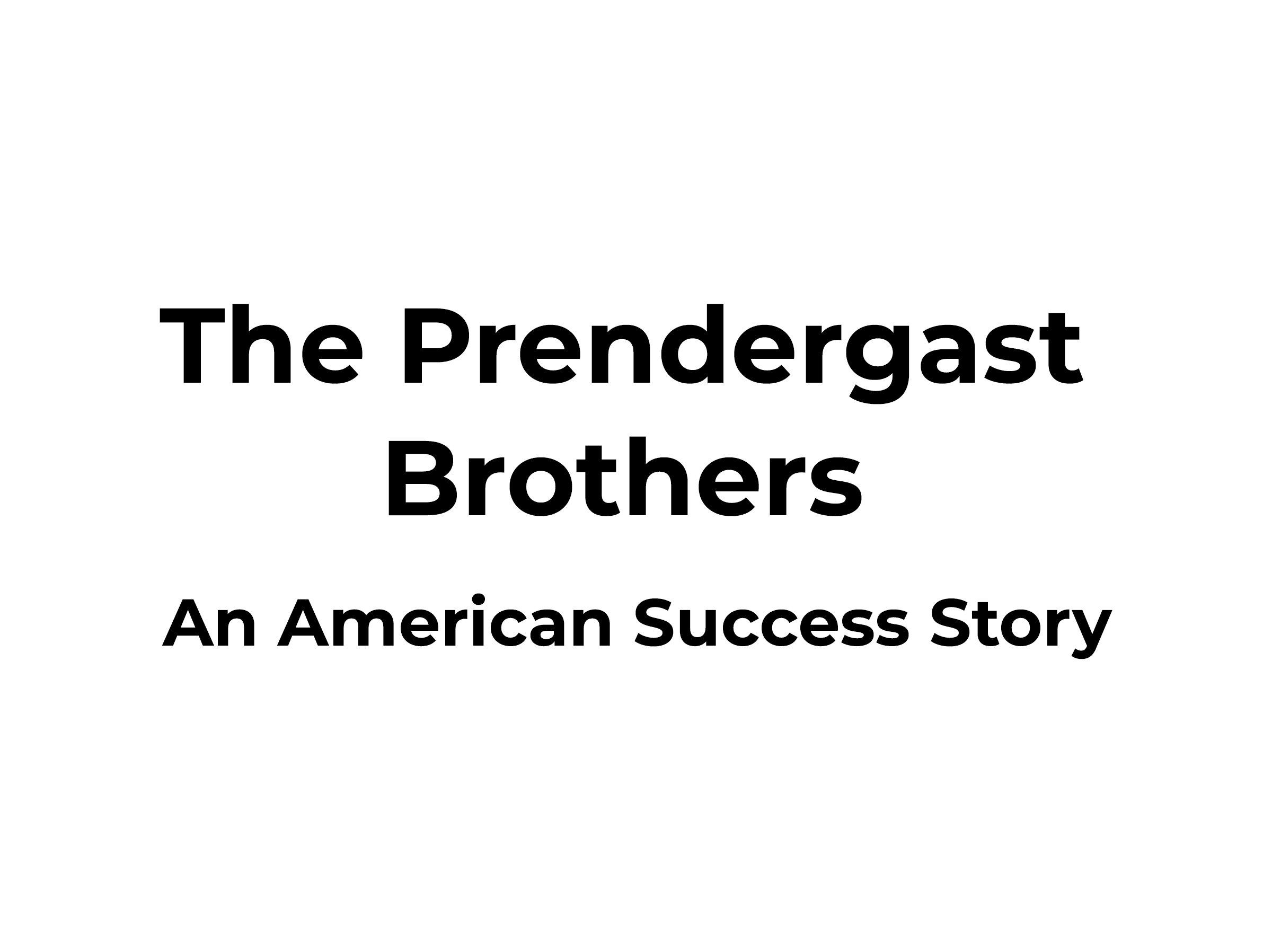
(The Prendergast Brothers: An American Success Story)

Photograph of Maurice Prendergast (ca. 1875)

Maurice B. Prendergast (ca. 1901)

Charles Prendergast (ca. 1890-1891)

Charles Prendergast in Studio (ca. 1919)

Charles Prendergast and Maurice Prendergast Sr. (ca. 1898-1900)

Maurice Prendergast, Charles Prendergast, William Glackens, Mrs. Travis, Edith Glackens (19–20th century)

Letter from Maurice Brazil Prendergast to Charles, Prendergast from Venice (November 9, 1911)

Letter from Maurice Brazil Prendergast to Charles, Prendergast from Venice (November 13, 1911)

Sketchbook (ca. 1900-1905)

(Maurice Prendergast: Studies in Paris, 1891-94)

St. Servan Fisherman (ca. 1891)

Brittany Coast (ca.1892-94)

(Charles Prendergast Frames)
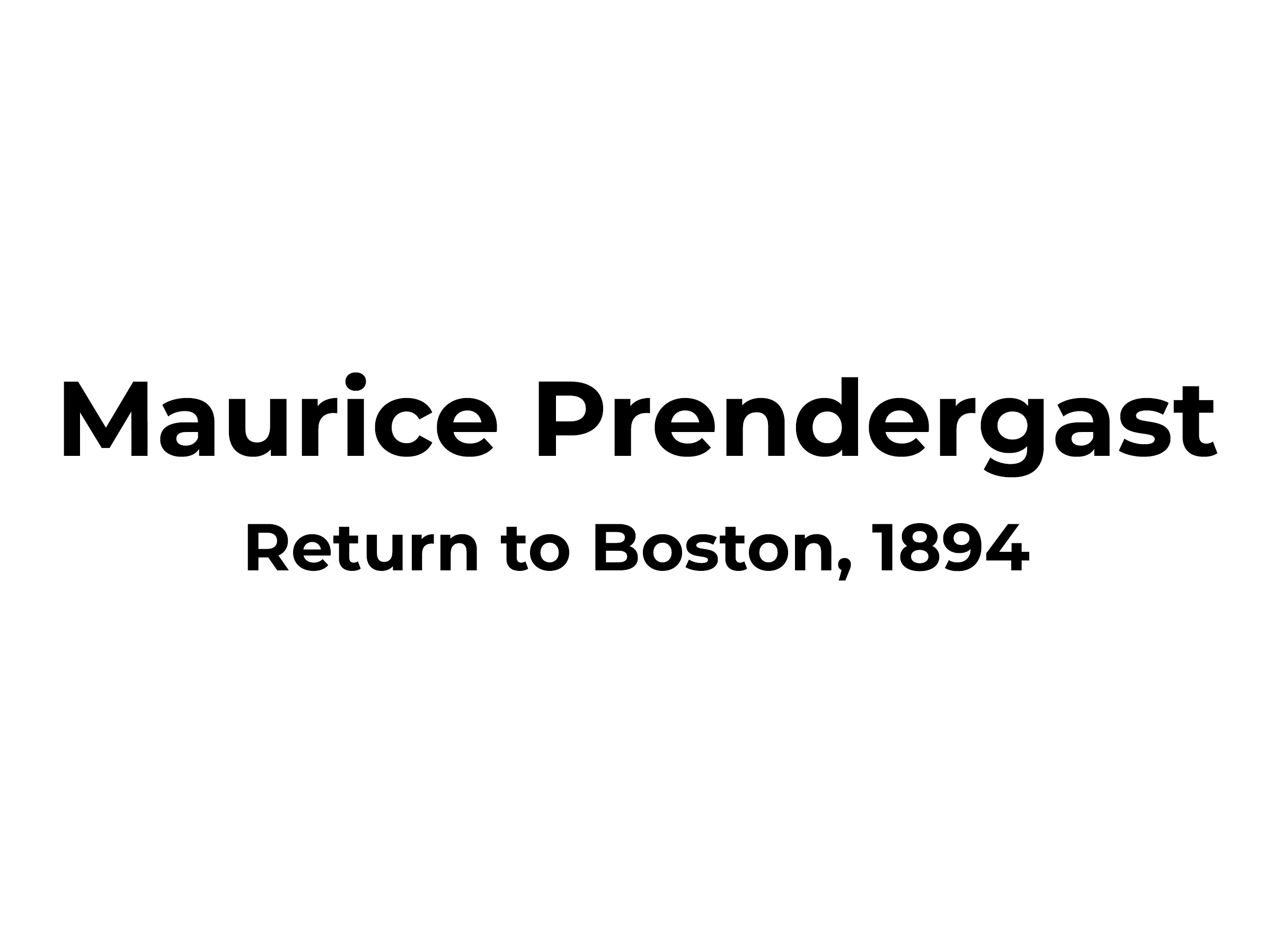
(Maurice Prendergast, Return to Boston, 1894)

Boston (ca. 1895-1897)

Rocky Shore, Nantasket (ca. 1896-1897)

Low Tide, Nantasket (ca. 1896-1897)

Rocky Point (ca. 1896-1897)

(Sojourn to Italy, 1898)

Fiesta Venice S. Pietro in Volta (ca. 1898-1899)

Fiesta Grand Canal, Venice (ca. 1899)

Festa del Redentore (ca. 1899)

Grand Canal, Venice (ca. 1898-1899)

(The Subject of Leisure in the Progressive Era)

(Maurice Prendergast: Return to Boston, 1899)

Beechmont (ca. 1900-1905)

Salem (ca. 1902-1904)

Beach Scene with Boat (ca. 1902-1904)

Approaching Storm (ca. 1902-1904)

(Encounters with Modernism: Maurice in Paris and St. Malo, 1907)

St. Malo (ca. 1903-1906)

St. Malo (ca. 1907)

St. Malo (ca. 1907-1910)

Sailboats, St. Malo (ca. 1910-1913)

St. Servan (ca. 1914-1915)

(A Watershed Exhibition: The Eight, 1908)

(Maurice Prendergast: The First American Modernist)

(Charles Prendergast’s Mirror Frames, 1912 and On)

Mirror Frame – Blue and Gold (ca. 1907-1912)

Mirror Frame with Four Angels’ Heads (1912)

Carving Tool (19 – 20th century)

Mallet (19 – 20th century)

Four-legged stool used by Charles Prendergast to work at his work table (ca. 1917)
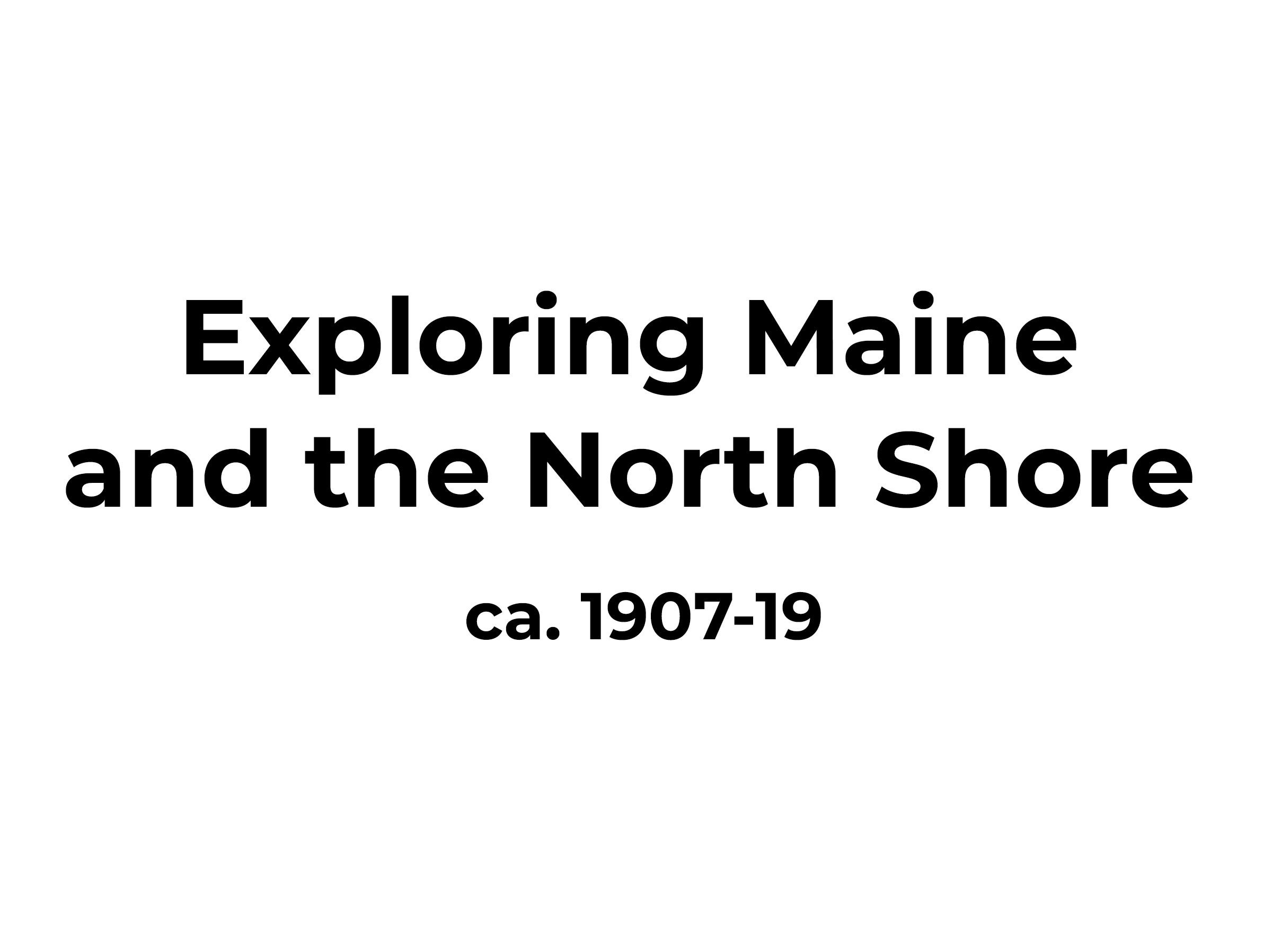
(Exploring Maine and the North Shore, ca. 1907-19)

Summer Hotel, Maine (ca. 1914-1915)

Summer Hotel, Maine (ca. 1914-1915)

Beach Scene, Maine (ca. 1910-1913)

Maine (ca. 1910-1913)

Maine, Blue Hills (ca. 1907-1910)

Maine Barn (ca. 1910-1913)

Maine (ca. 1907-1910)

Beach Scene, Maine (ca. 1910-1913)

Maine Waterway (ca. 1914-1915)

North Shore (ca. 1907-1910)

Neponset Bay (ca. 1910-1913)

Summer Day, Salem (ca. 1915-1918)

Bath Houses, Annisquam (ca. 1919)

Sunset, Boston Harbor (ca. 1914-1915)

(Variations on a Theme: Waterfront Scenes, ca. 1907-15)

Park by the Sea (ca. 1914-1915)

Park Benches (ca. 1907-10)

A Day in the Country (ca. 1914-1915)

The Birches (ca. 1914-1915)

Maytime (Maytime, ca. 1907-1910)

Late Summer (ca. 1907-1910)
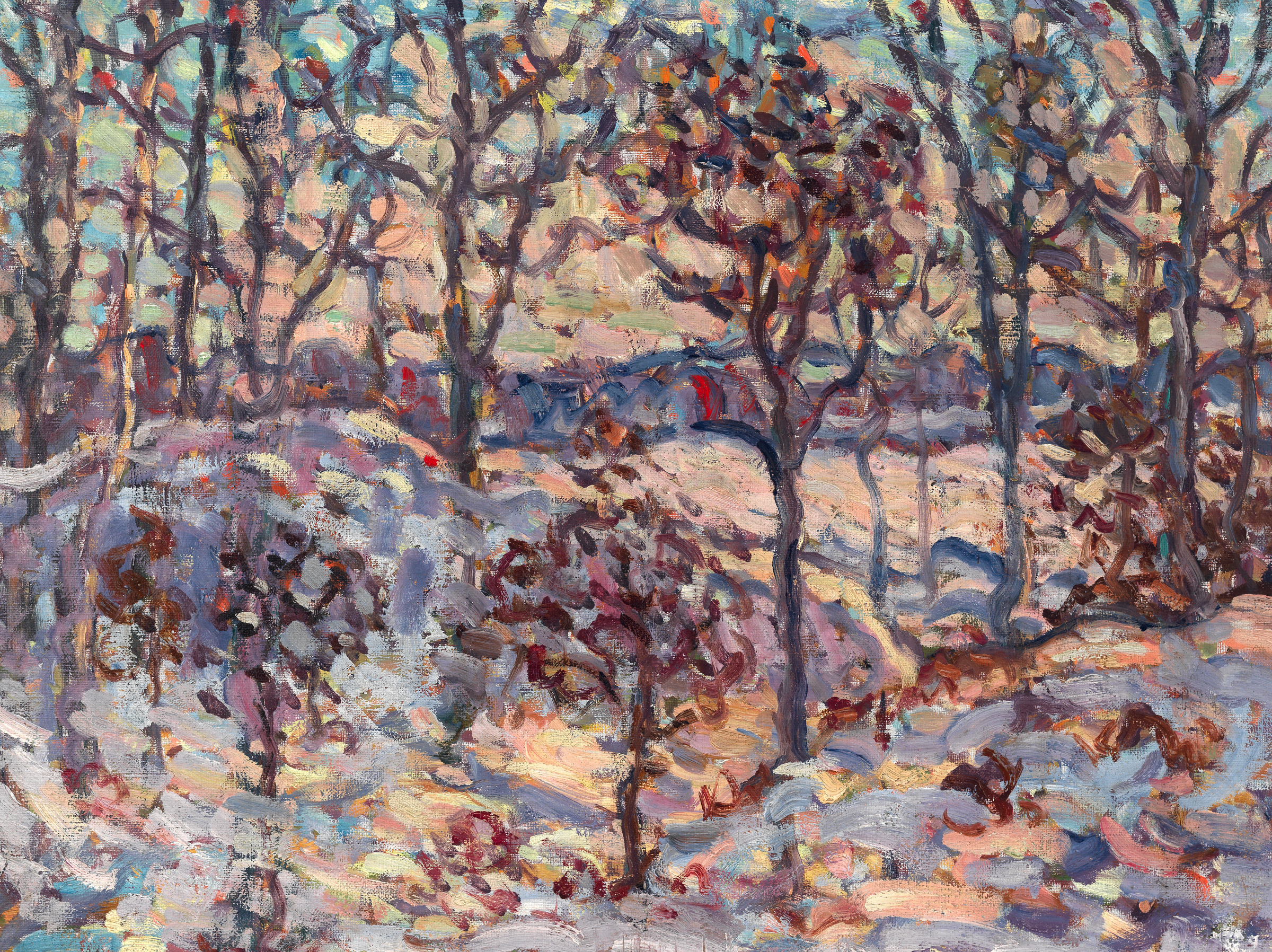
Snowscape (ca. 1907-1910)

Winter Scene (ca. 1907-1910)

(Portraits and Still Lifes, ca. 1910-13)
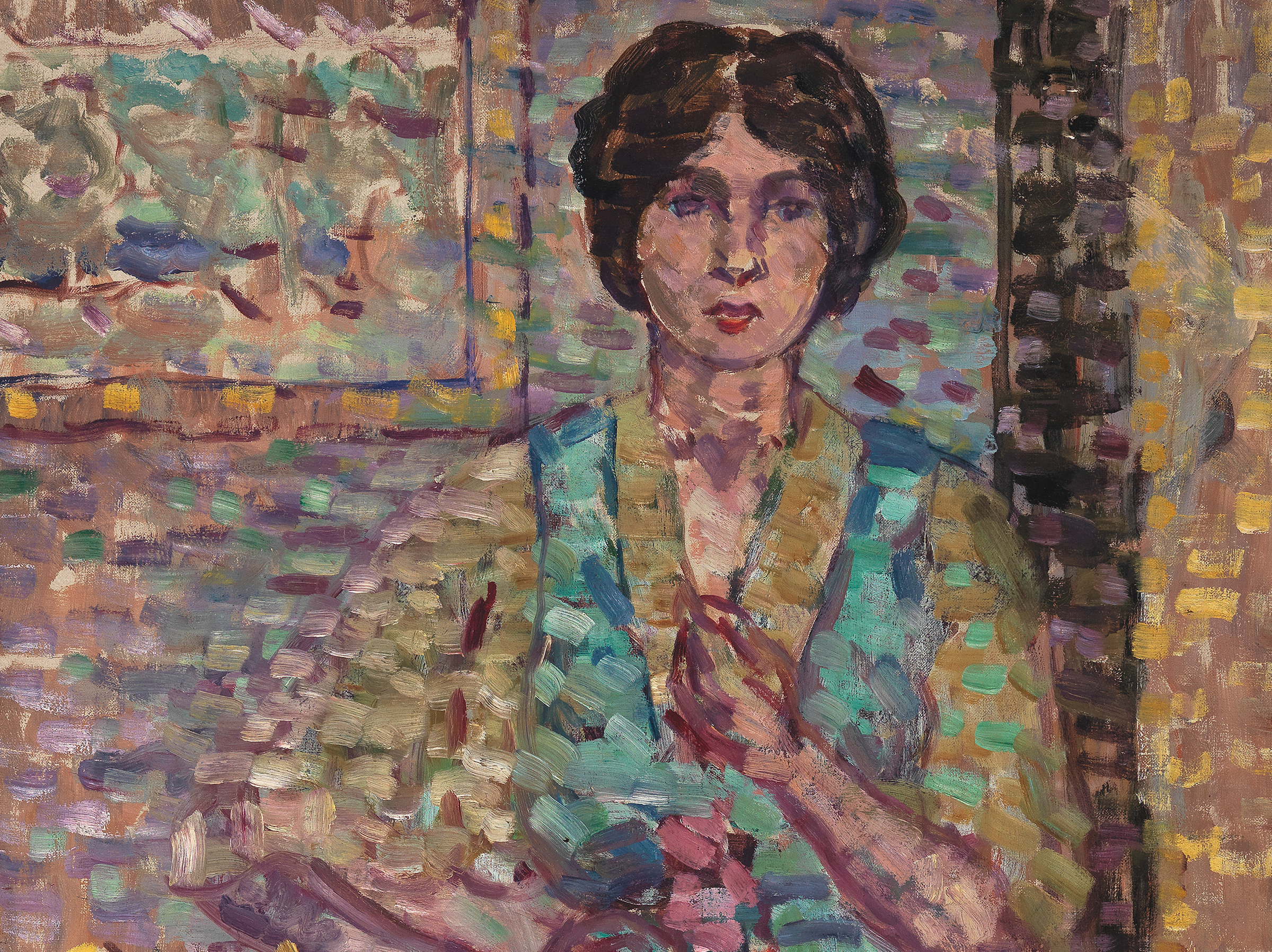
Woman in Green Dress (ca. 1910-1913)

Portrait of a Young Girl (ca. 1910-1913)

Poppies in a Blue Vase (ca. 1910-1913)

Flowers (ca. 1910-1913)
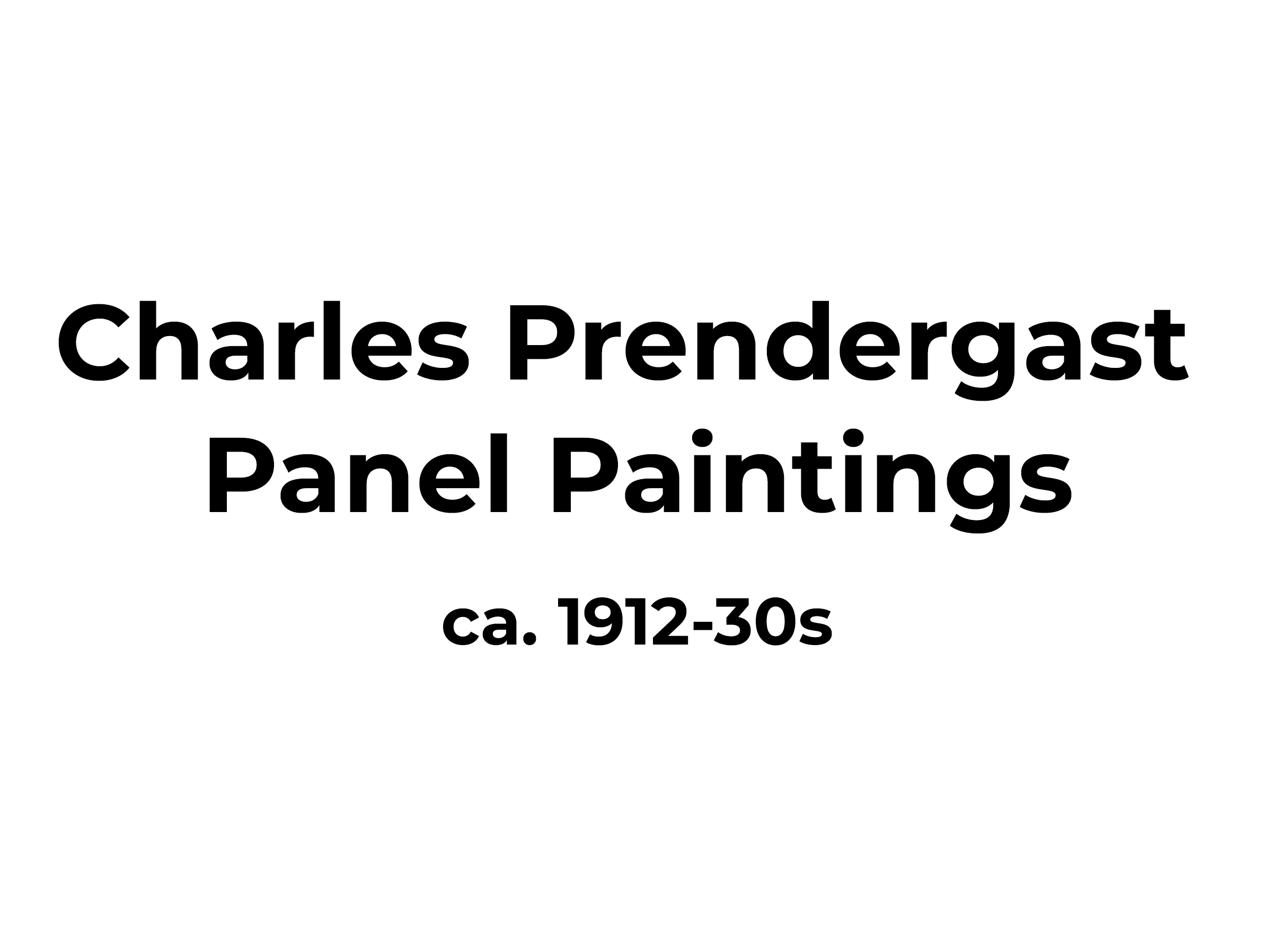
(Charles Prendergast Panel Paintings, ca. 1912-30s)

Annunciation (ca. 1912-1915)

Rising Sun (ca. 1912)

Sunset (ca. 1914-1916)

The Riders (ca. 1915)

Donkey Rider (ca. 1915-1917)

Animal Decoration on Glass, with Mirror (ca. 1928-1932)

Angel (ca. 1915)

Man Dancing (ca. 1917)

Box (ca. 1932)
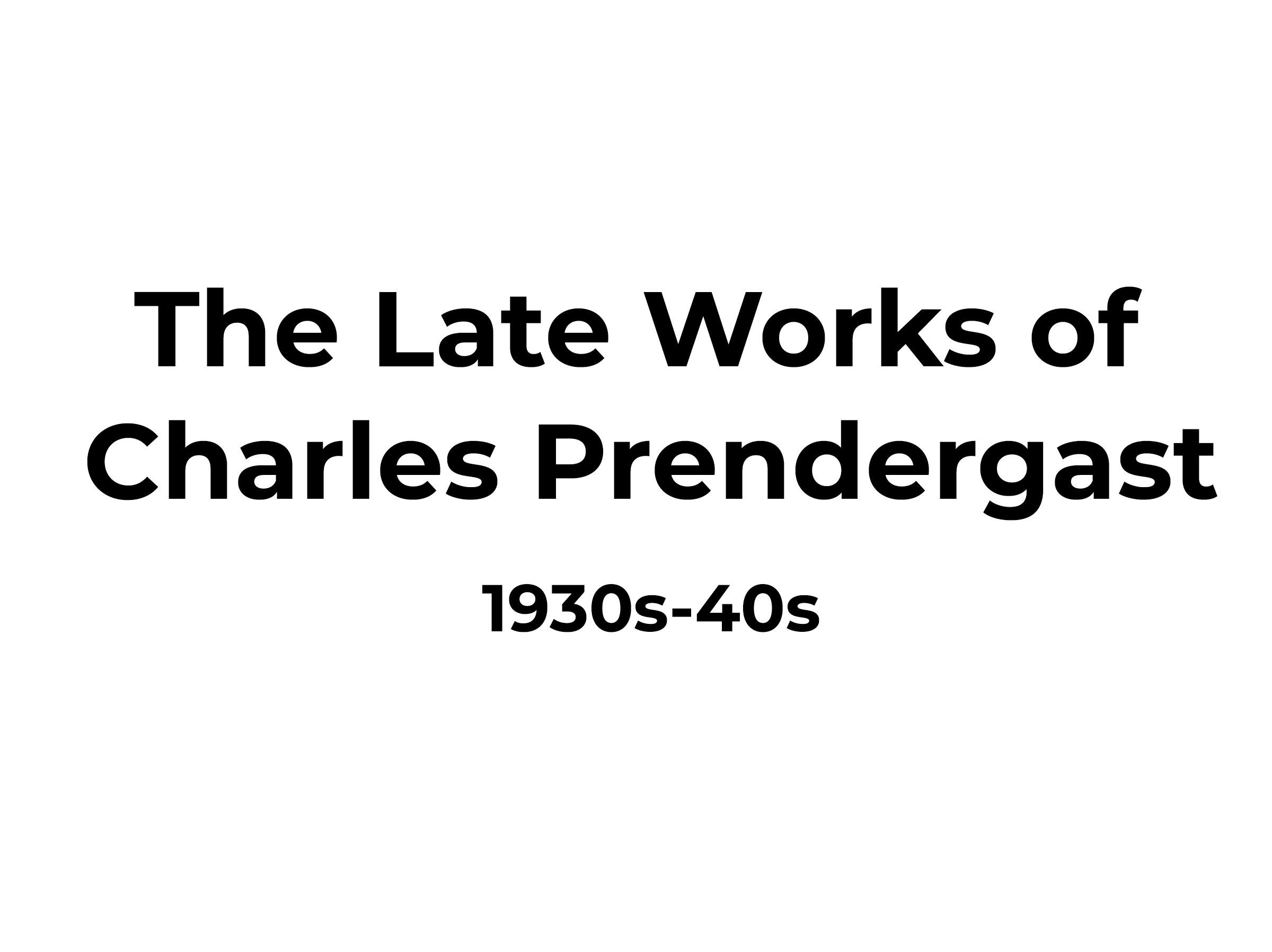
(The Late Works of Charles Prendergast, 1930s-40s )

Donkey Rider #2 (ca. 1936)
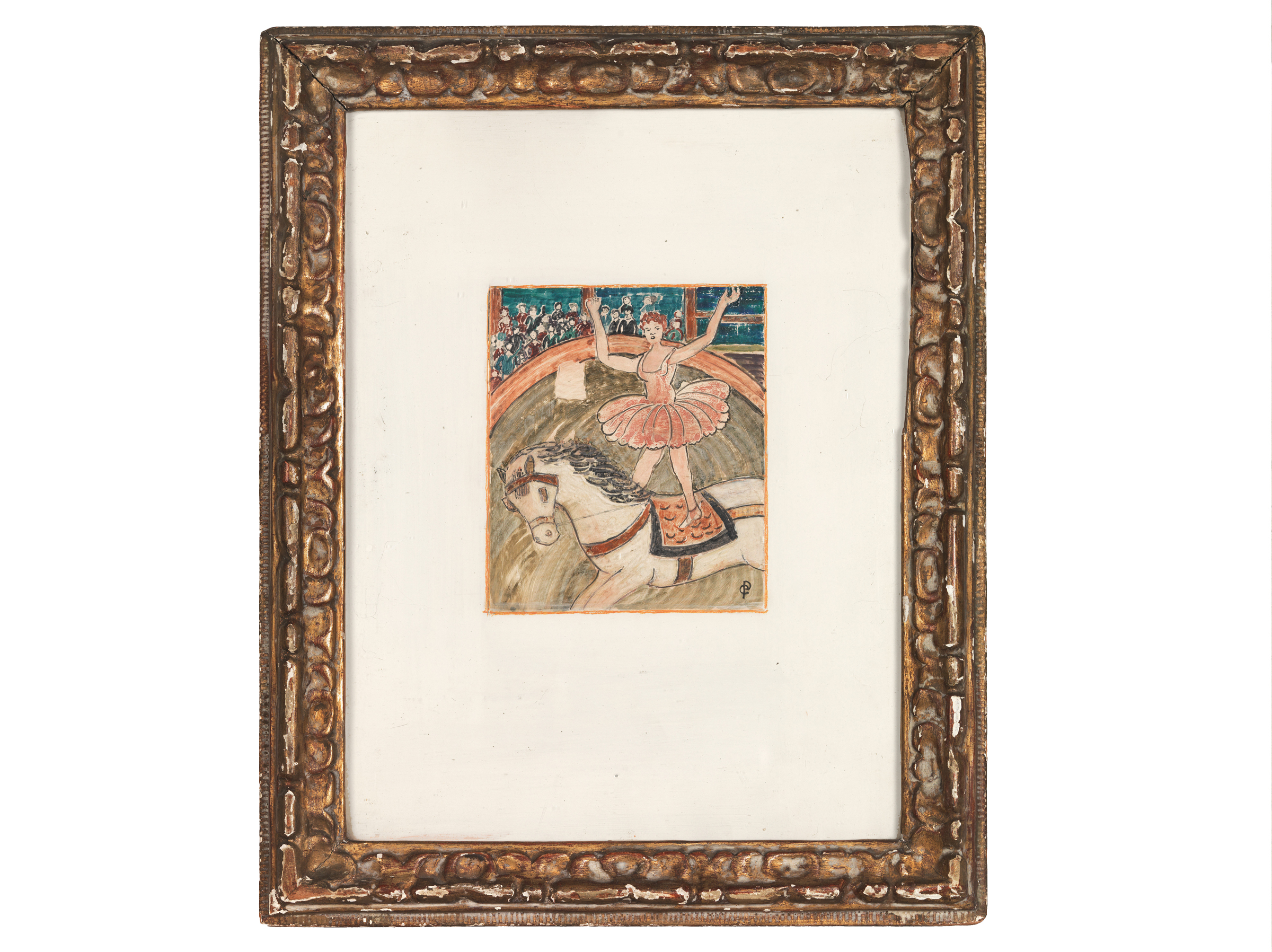
Circus Rider No. 9 (ca. 1940)
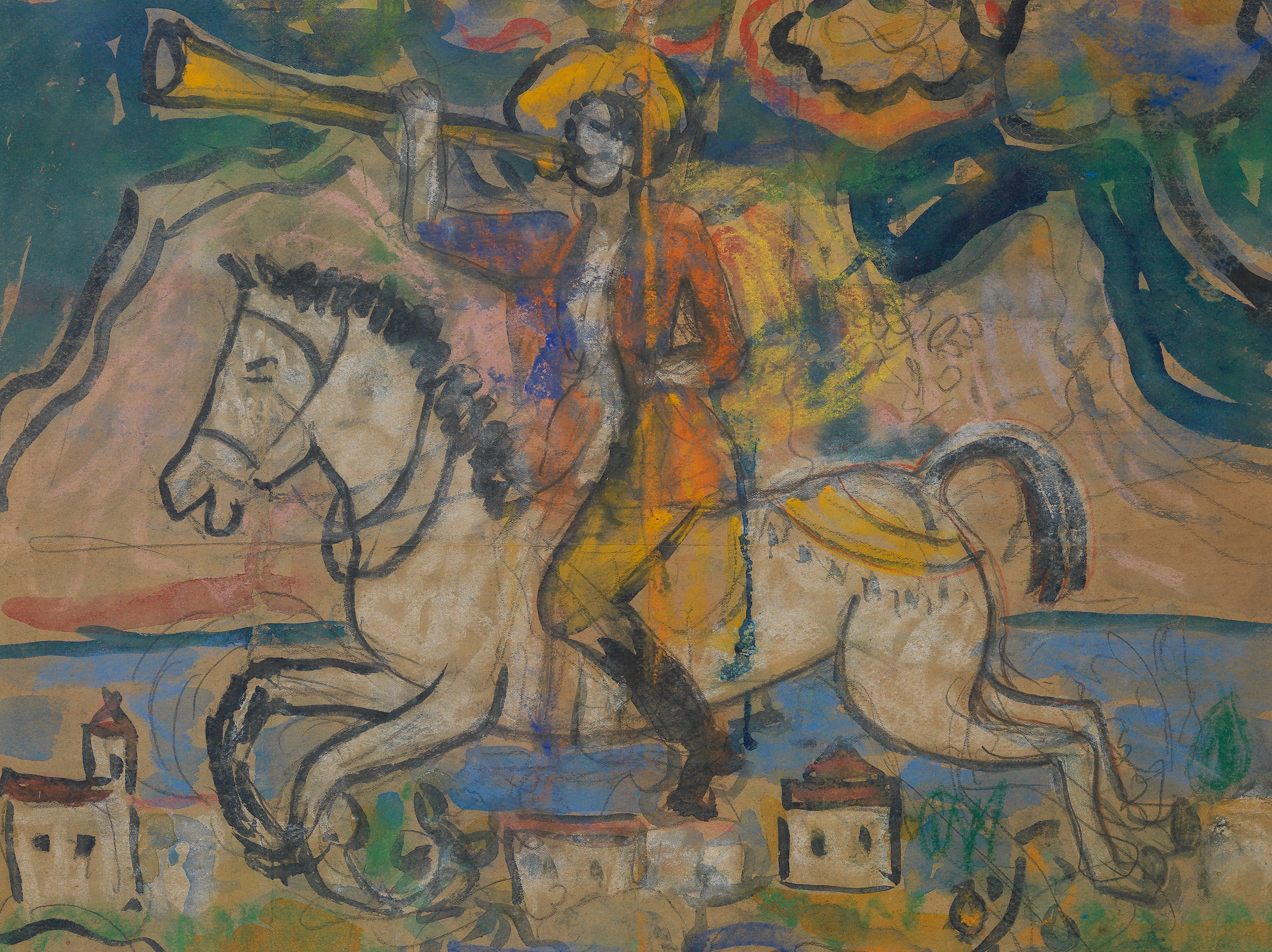
Study for Red Cross Poster (ca. 1942)

Skaters at the World’s Fair (1940)
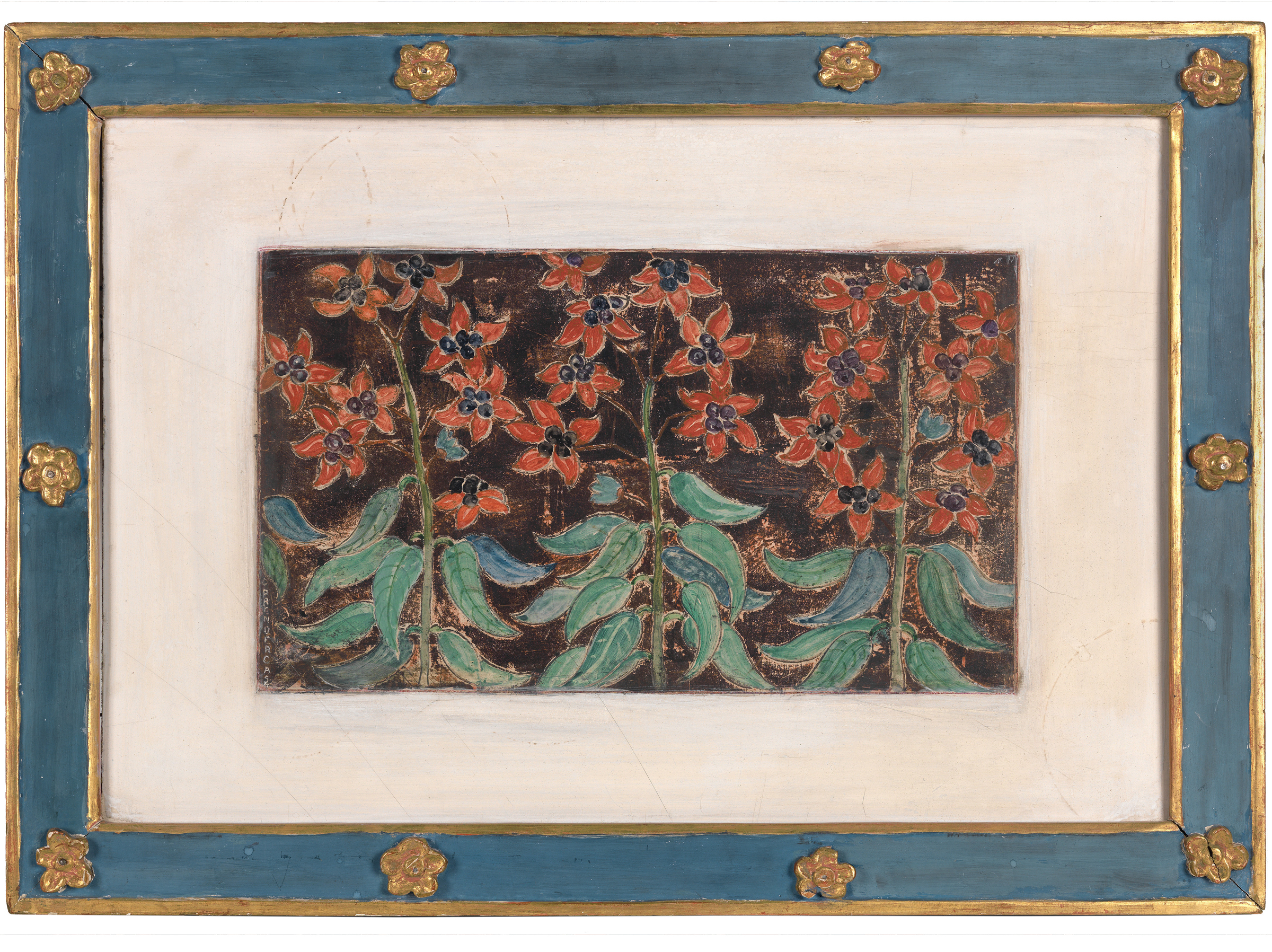
Glory Bower (ca. 1946-1947)
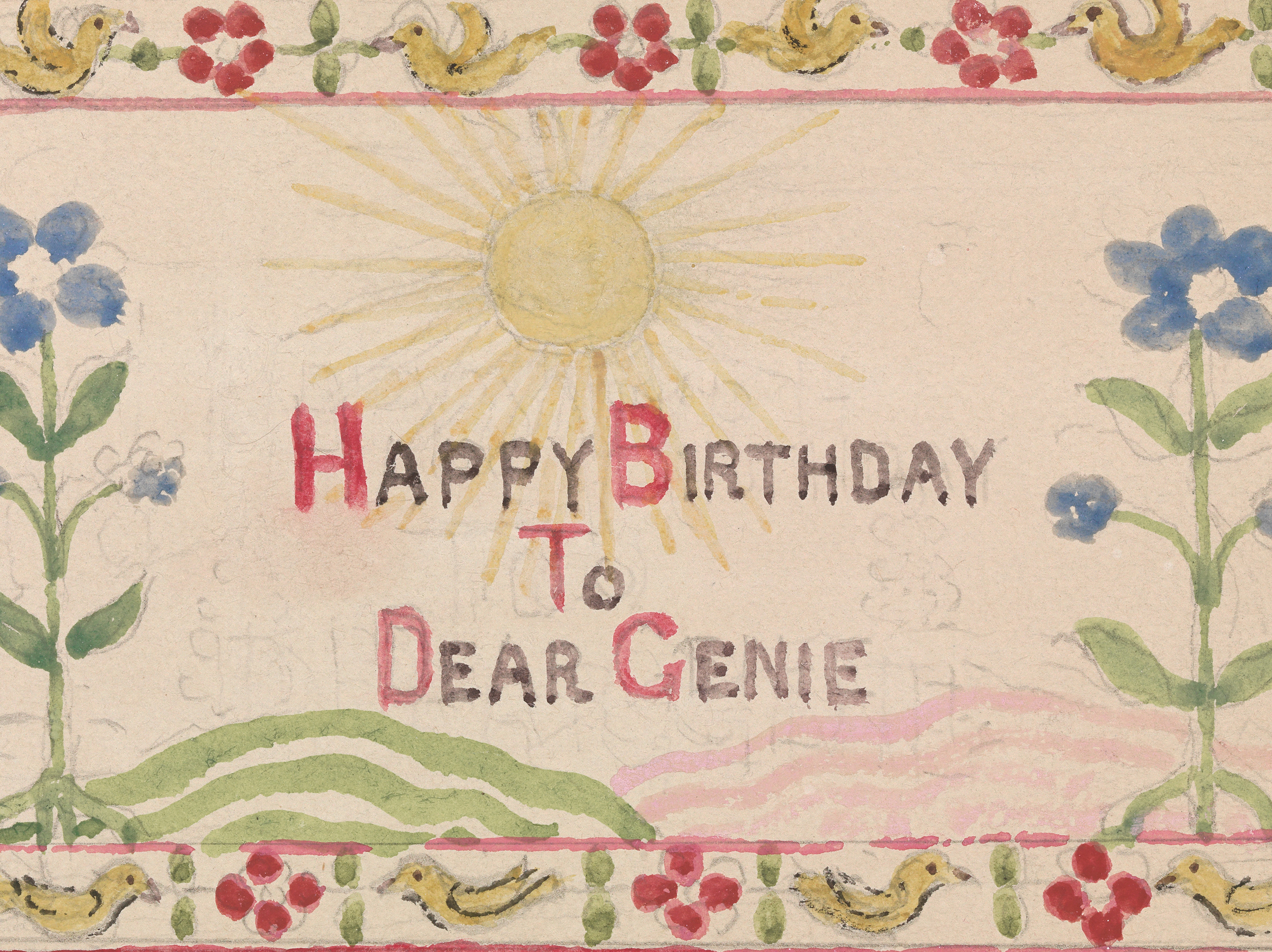
Birthday Cards (n.d.)

Florida Grove (ca. 1946-1947)

Three-legged Stool (ca. 1932-1935)

(Maurice and Charles, Side-by-Side)

Bathers in a Cove (ca. 1910-1913)

Bathers by the Sea (ca. 1910-1913)

Bathers at Passamaquoddy Bay (ca. 1910-1913)

Four Nudes at the Seashore (ca. 1910-1913)

Bathers and Rocks (ca. 1910-1913)

Bathers Under the Trees (ca. 1940)
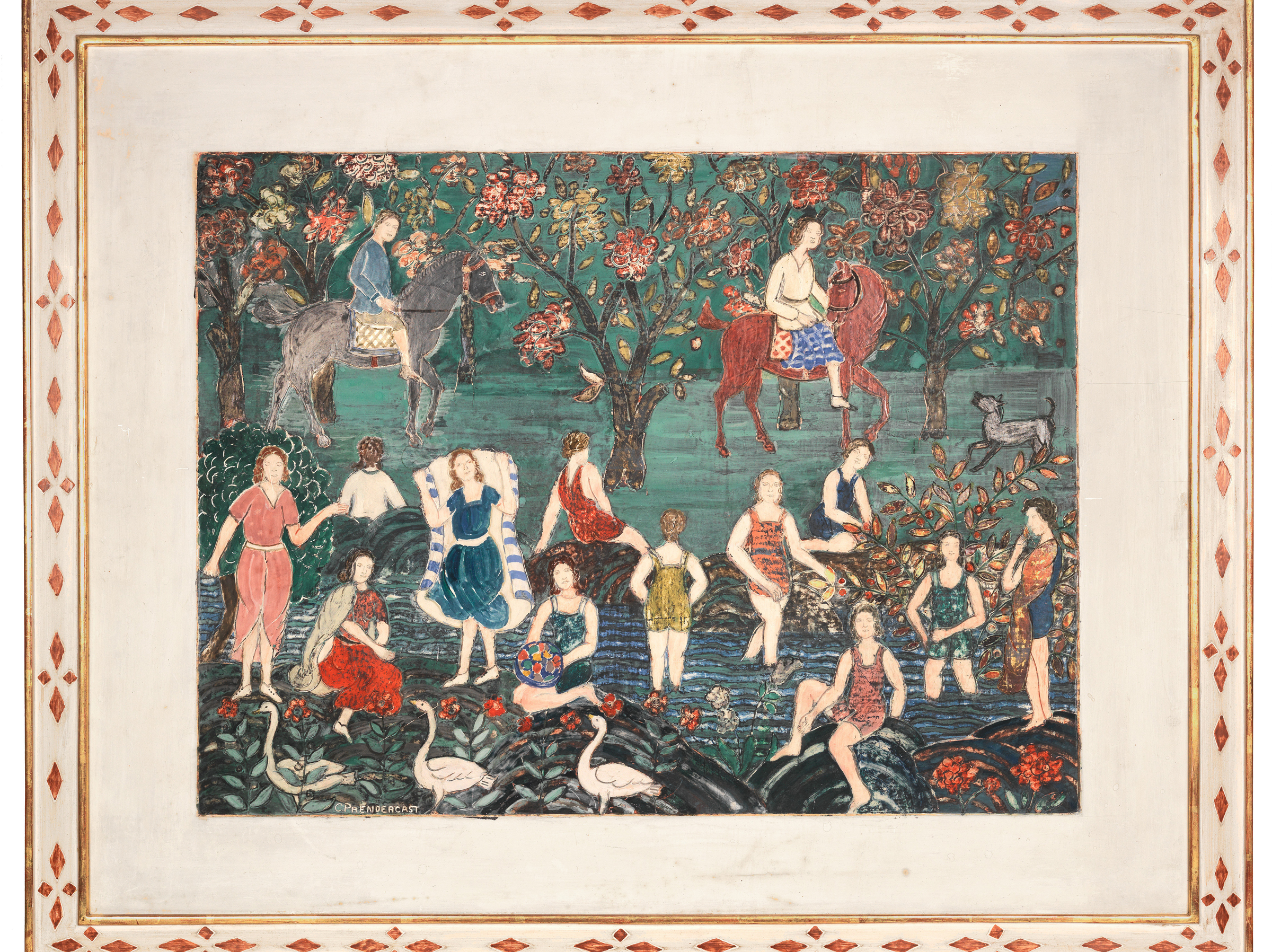
Bathers (ca. 1940)
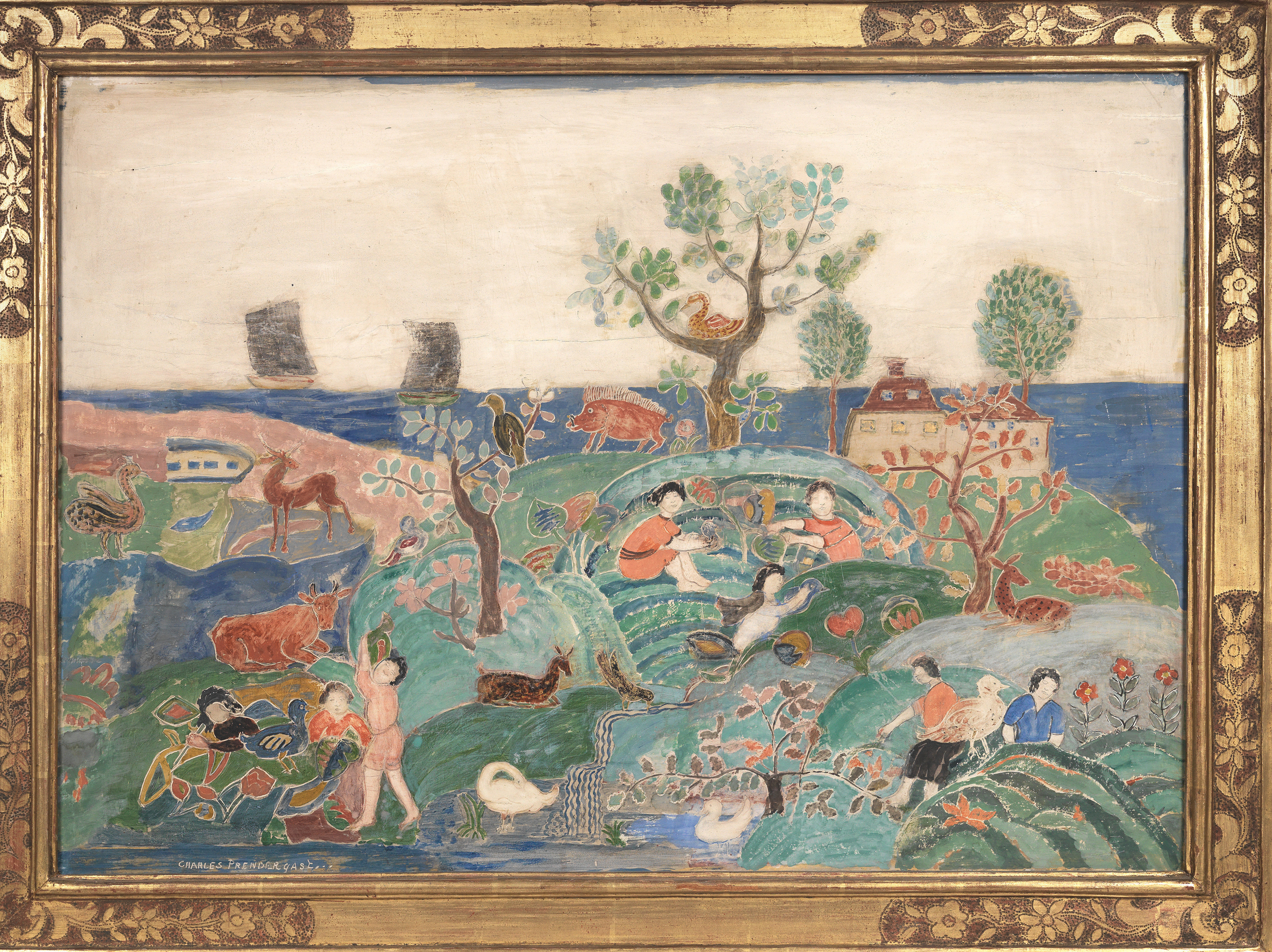
Fairy Story (1922 (Reworked ca. 1942-46))



